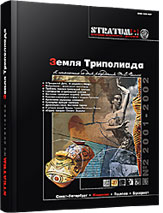К археологии социальных изменений (по материалам позднего доисторического периода Балкан)
Approach to the archaeology of social change (A case study from Balkan later prehistory)
Author(s): Lolita NikolovaSubject(s): History, Archaeology, Social history, Ancient World
Published by: Издательский дом Stratum, Университет «Высшая антропологическая школа»
Summary/Abstract: This communication approaches the social changes in the Final Copper Age and Early Bronze I in the Balkans focusing on the Eastern Balkans (east of Olt – Osum – Stryama – Drama north-south geographical axis) from the latest fifth and fourth millennium BC. The background presumes that the Balkans are not a unique region but a cultural, geographical and historic entity, in which the cultural processes from different epochs are comparable (in retrospective and prospective plan) between and with other regions. It is to be also proposed the similarity and dissimilarity are common characteristics of Balkan prehistoric material culture, as well as in most cases the dissimilarity in diachronic plan is a result of innovations and interactions, for which the migration theory is the least conceivable explanation strategy. At the same time, the migration processes were an integrated part of the common cultural processes and changes in the prehistoric Balkans.For the period under discussion, the settlement pattern and pottery production are the most expressive characteristics of the social changes that argue a shift from sedentary and semi-sedentary toward mobile and semi-mobile communities in the latest fifth and in earlier fourth millennium BC in the Balkans (Final Copper I-II). In turn, in later fourth millennium BC there is a reverse tendency – towards intensive sedentarization. In the lower Danube that process is exemplified through the possibly semi-sedentary Cernavoda III culture the earliest communities of which occupied microregions with excellent environment for mixed (agriculture and stockbreeding) economy, for instance Hotnitsa-Vodopada. Of special importance is the success in the Early Bronze I investigation of upper Thrace. In the light of the new evidence from Upper Thrace (Dubene-Sarovka (Nikolova 1996; 1999a; 1999b; 2000d; Drama- Merdzhumekya (Lichardus et al. 2000), etc.) the process of sedentarization appears to be also a long process that covered all or most of the second half of the fourth millennium BC. The last model generally contrasts to the 1980s – earlier 1990s view seeing Upper Thrace contemporaneously re-occupied by sedentary population just at the very end of the fourth millennium BC or the beginning of the third millennium BC (Ezero A1 culture).The recent archaeological evidence infers a regional variety of the cultural development of the Balkan Later Copper societies and a variety of factors that were the background of their crisis in later fifth millennium BC focused in this approach on the ceramic production. Further, the dynamic controversial process in Balkan earlier fourth millennium BC included social-economic changes (nomadization), social conflicts (Yunatsite), infiltration of population from the northwest Black Sea, as well as and intensification of the cultural integration processes with neighbor and distant cultures.The theoretical difficulties of the topic of the cultural processes in the Balkans in the fourth millennium BC is due to the fact that it should be explained not only a given body of record but also the absence of evidence. In addition, there is no tradition of social archaeology interpretations of Balkan Prehistory which usually have been exemplified by selected topical issues or still approach only the frameworks of analysis as in this case of attempt the social change theory to be applied to the region and period under discussion.
Journal: Stratum plus. Археология и культурная антропология
- Issue Year: 2002
- Issue No: 2
- Page Range: 280-294
- Page Count: 15
- Language: Russian
- Content File-PDF

